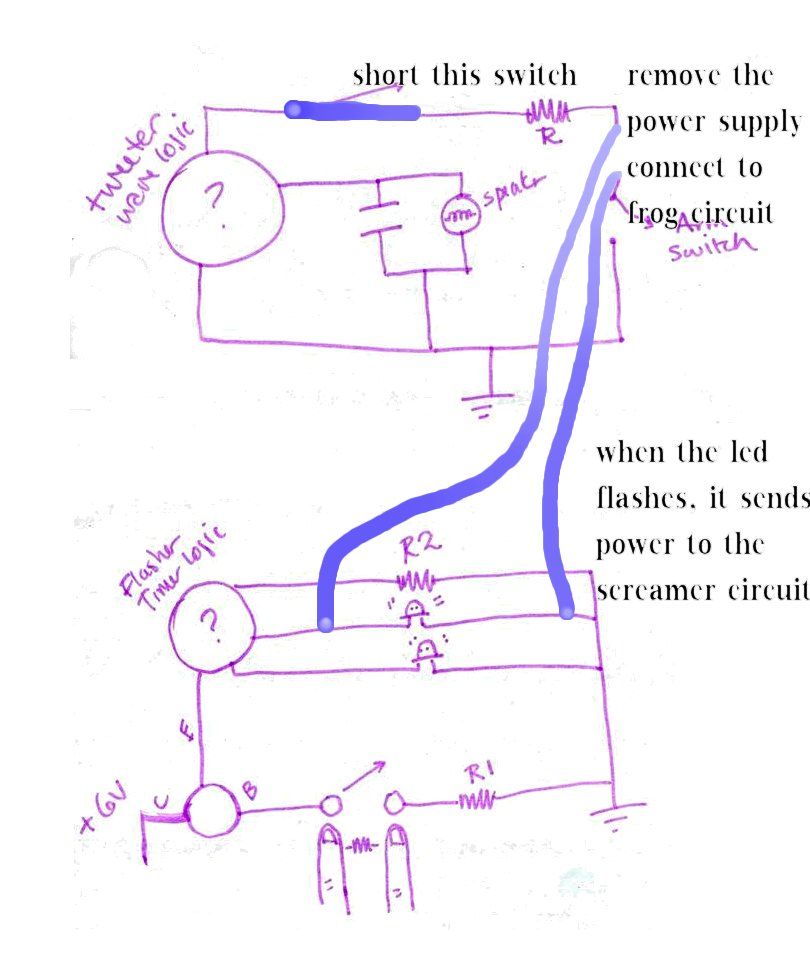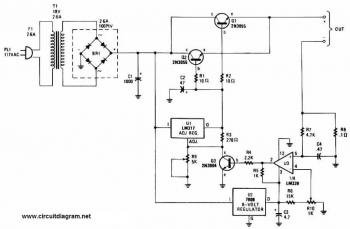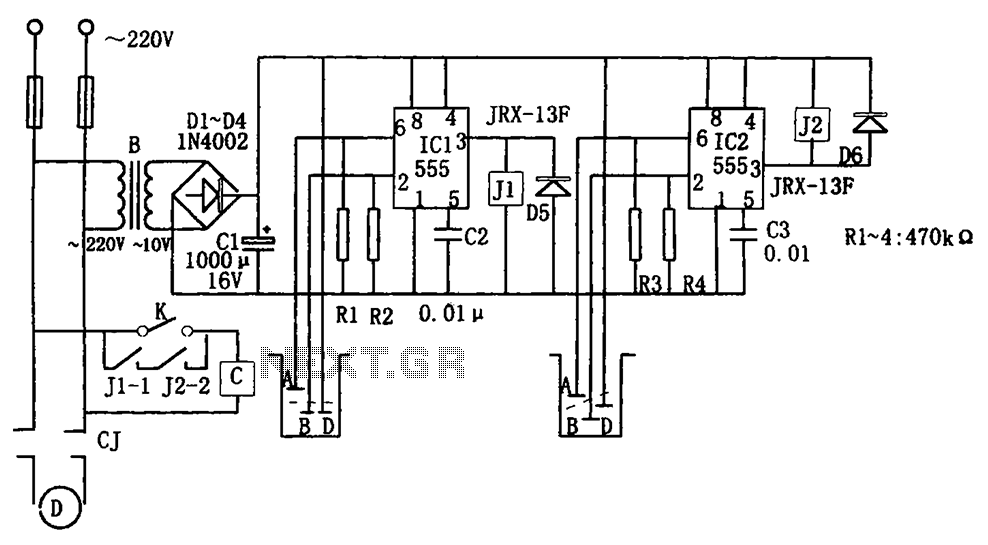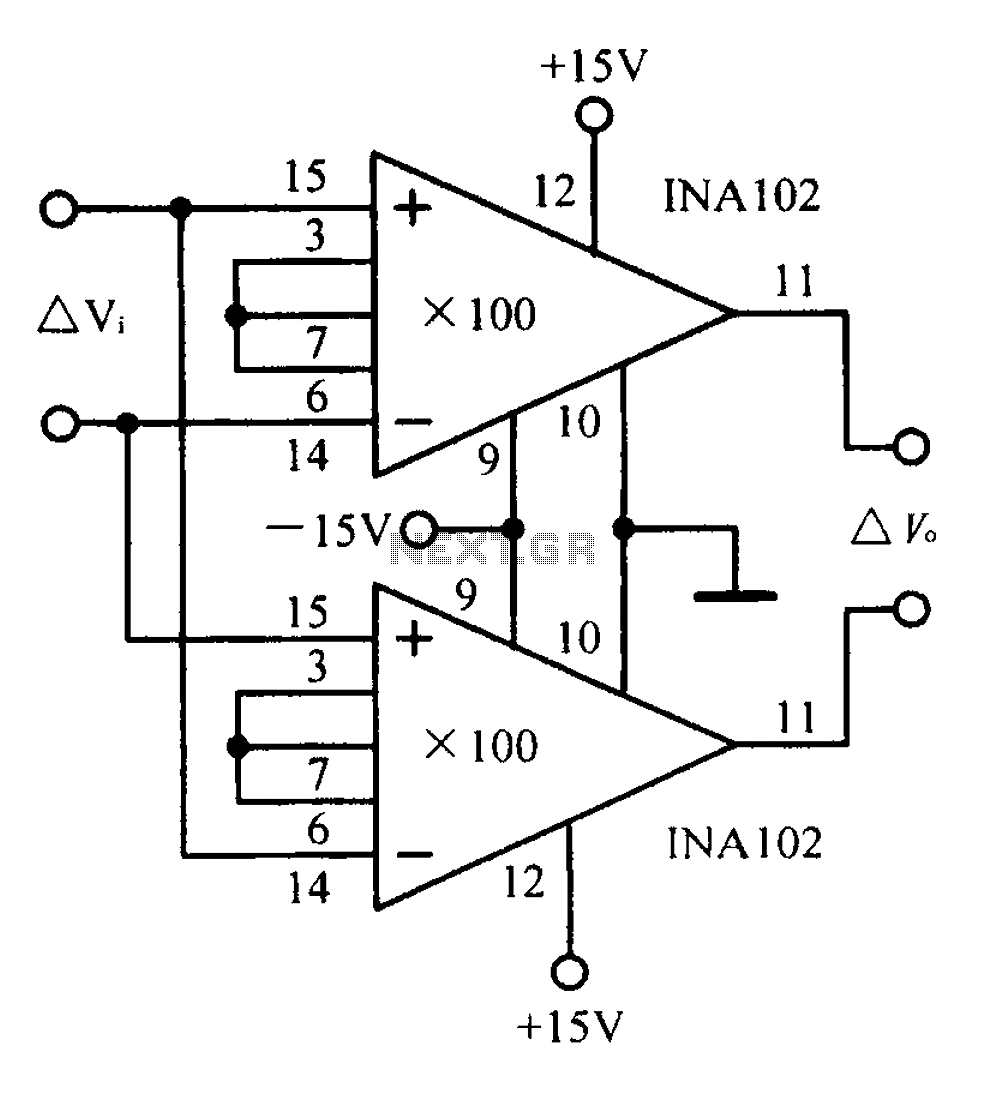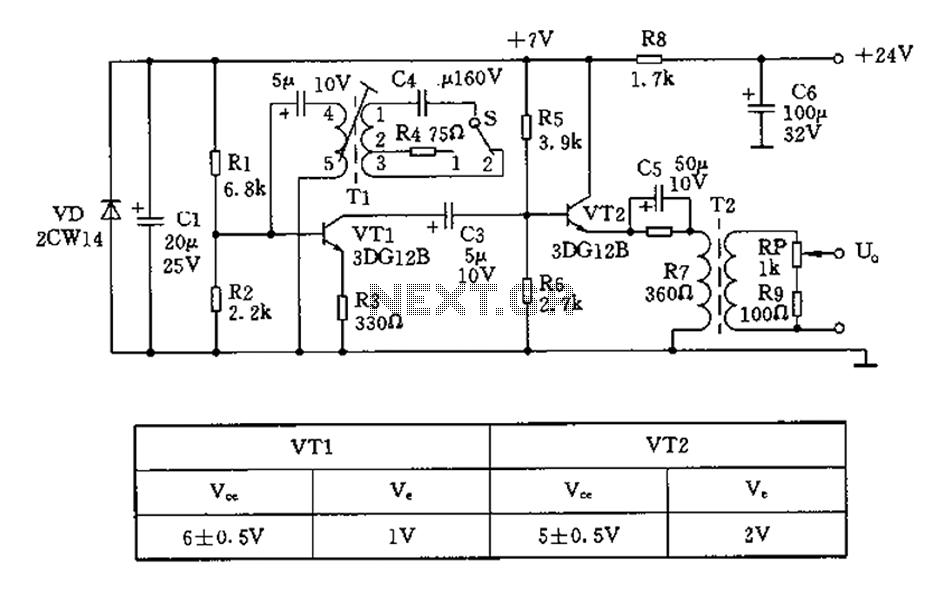
MC14093B Fluid Level SensorCircuit Diagram

The circuit diagram presented illustrates the MC14093B Fluid Level Sensor Circuit. It is characterized by its compact and simple design, utilizing a single-chip configuration suitable for a wide range of applications.
The MC14093B is a CMOS quad two-input NAND gate that can be configured to create a fluid level sensor. This circuit typically employs two probes that are placed at different levels in a tank. When the fluid reaches a certain level, it completes a circuit between the probes, allowing the NAND gate to change its output state.
The power supply for the circuit can be derived from a standard DC source, typically ranging from 3V to 15V, depending on the specific application requirements. The output from the NAND gate can be connected to an LED indicator, a relay, or a microcontroller input to signal when the fluid level has reached the designated point.
In addition to the basic functionality, the circuit can be enhanced with additional components such as resistors and capacitors to filter noise and stabilize the output signal. The use of pull-up or pull-down resistors may be necessary to ensure that the NAND gate operates correctly in the desired logic state when the probes are not submerged.
Overall, the MC14093B Fluid Level Sensor Circuit offers a reliable and efficient solution for monitoring fluid levels in various applications, including industrial tanks, water reservoirs, and household appliances. Its simplicity and versatility make it an ideal choice for both hobbyists and professional engineers.The following circuit shows about MC14093B Fluid Level Sensor Circuit Diagram. Features: compact and simple, single-chip circuit, for a wide range .. 🔗 External reference
The MC14093B is a CMOS quad two-input NAND gate that can be configured to create a fluid level sensor. This circuit typically employs two probes that are placed at different levels in a tank. When the fluid reaches a certain level, it completes a circuit between the probes, allowing the NAND gate to change its output state.
The power supply for the circuit can be derived from a standard DC source, typically ranging from 3V to 15V, depending on the specific application requirements. The output from the NAND gate can be connected to an LED indicator, a relay, or a microcontroller input to signal when the fluid level has reached the designated point.
In addition to the basic functionality, the circuit can be enhanced with additional components such as resistors and capacitors to filter noise and stabilize the output signal. The use of pull-up or pull-down resistors may be necessary to ensure that the NAND gate operates correctly in the desired logic state when the probes are not submerged.
Overall, the MC14093B Fluid Level Sensor Circuit offers a reliable and efficient solution for monitoring fluid levels in various applications, including industrial tanks, water reservoirs, and household appliances. Its simplicity and versatility make it an ideal choice for both hobbyists and professional engineers.The following circuit shows about MC14093B Fluid Level Sensor Circuit Diagram. Features: compact and simple, single-chip circuit, for a wide range .. 🔗 External reference
